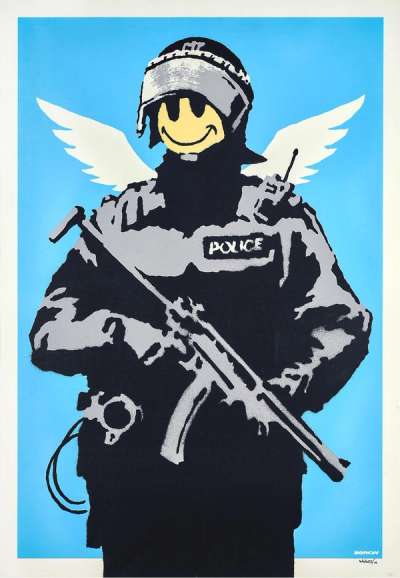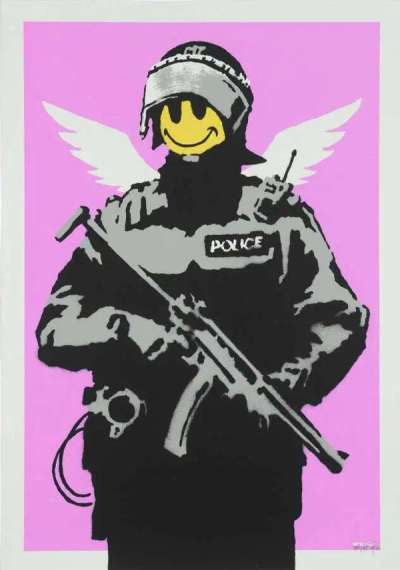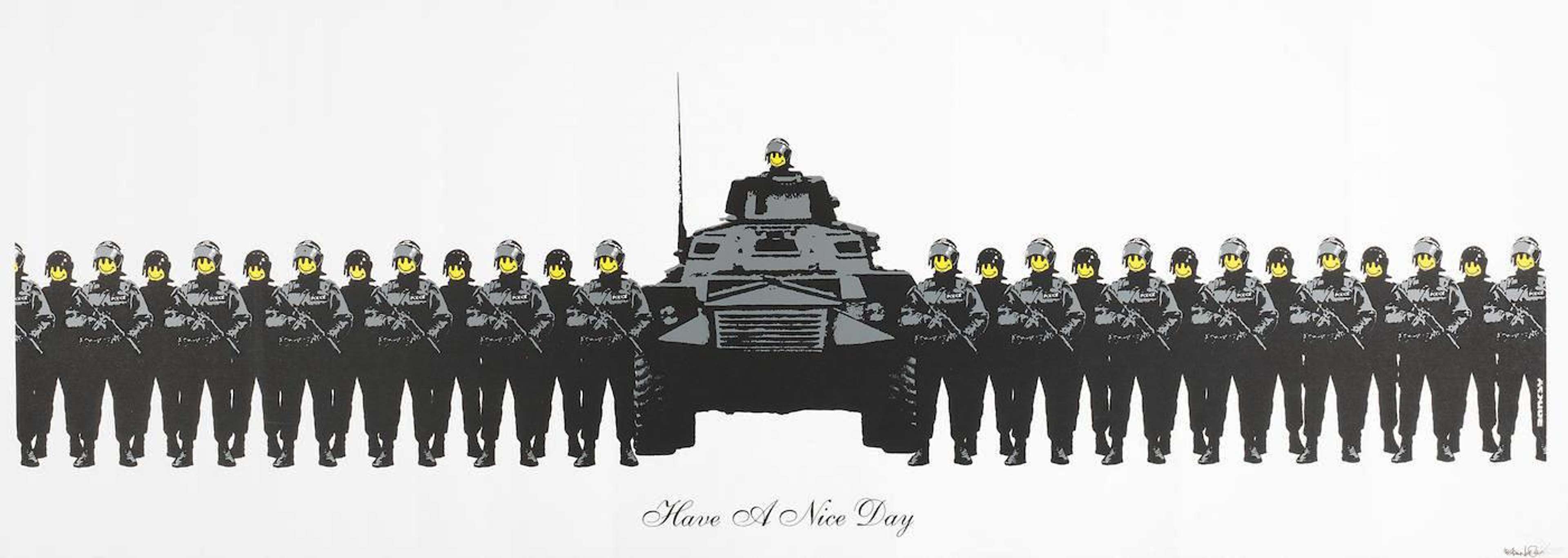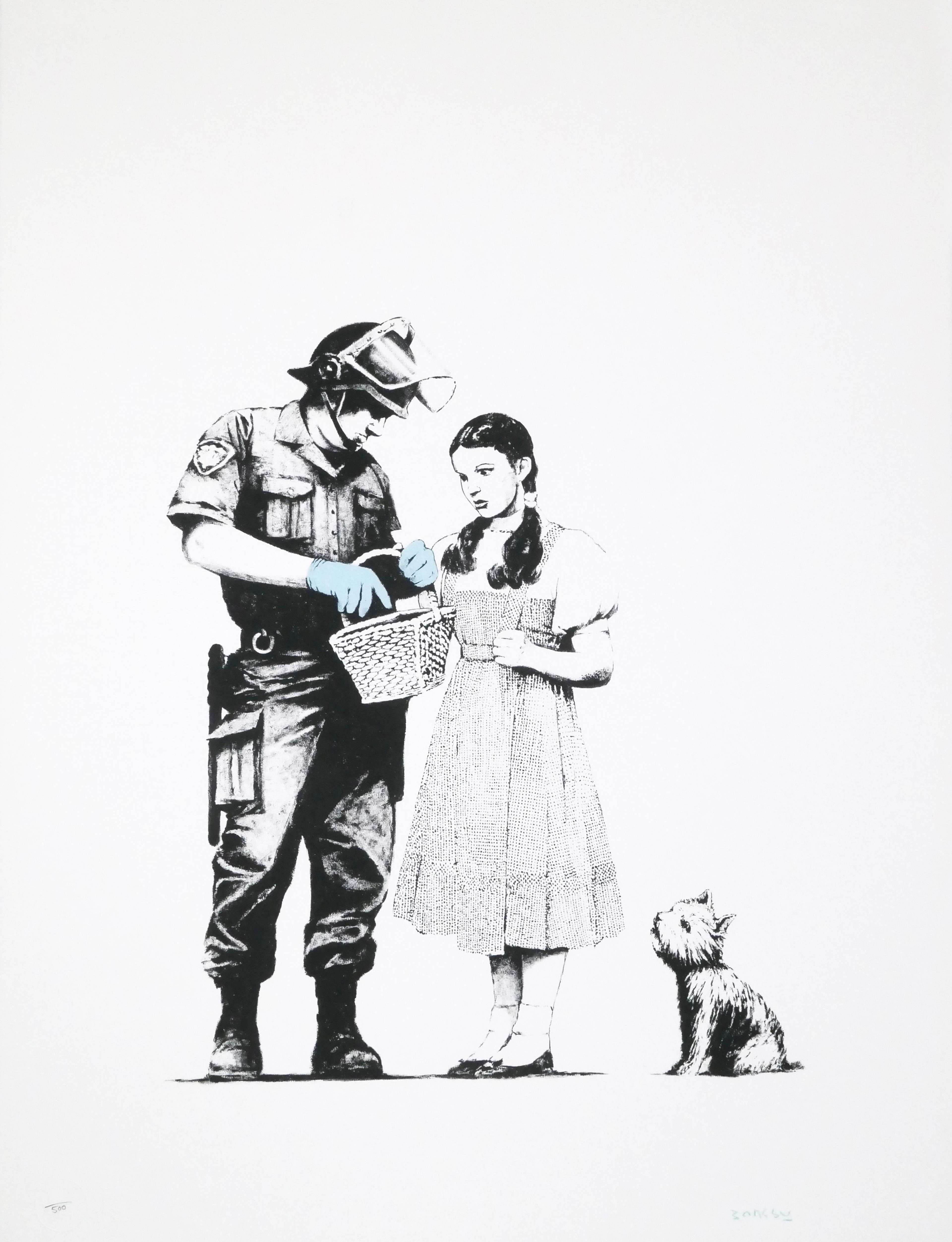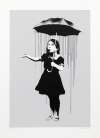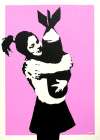Flying
Copper
Originally sold for £40 from a carboot, Banksy’s now famous Flying Copper evidences how far he has come in the art world. Showing a policeman with an acid-house smiley face pasted over his own, the prints bear a coded, rebellious message, and have been offered in numerous editions, various colourways, and rare artist proofs.
Banksy Flying Copper For sale
Flying Copper Value (5 Years)
Works from the Flying Copper series by Banksy have a strong market value presence, with 93 auction appearances. Top performing works have achieved standout auction results, with peak hammer prices of £150000. Over the past 12 months, average values across the series have ranged from £8000 to £150000. The series shows an average annual growth rate of 2.94%.
Flying Copper Market value
Auction Results
| Artwork | Auction Date | Auction House | Return to Seller | Hammer Price | Buyer Paid |
|---|---|---|---|---|---|
 Flying Copper Banksy Unsigned Print | 30 Oct 2025 | Tate Ward Auctions | £8,075 | £9,500 | £12,500 |
 Flying Copper Banksy Signed Print | 30 Sept 2025 | Christie's London | £19,550 | £23,000 | £30,000 |
Sell Your Art
with Us
with Us
Join Our Network of Collectors. Buy, Sell and Track Demand
Meaning & Analysis
Flying Copper is an iconic example of Banksy's early work, where a heavily armed British police officer dons angel wings and a yellow smiley face.
On a flat coloured backdrop, sky blue or pink depending on the edition, Flying Copper depicts a strange and paradoxical character: the policeman, fully equipped with machine-gun, helmet, walkie-talkie and handcuffs, but topped with a striking, stick-on face and a pair of small angel-like wings. The smiley is both a nod to 1990s acid house culture and the innocence of childhood, depending on your interpretation.
These Banksy prints were released in 2003 as 150 signed and 600 unsigned editions, all featuring the yellow acid-house smiley face. There are also a select few rare Artist's Proofs with a pink smiley instead.
Flying Copper was Banksy's first print release in collaboration with Steve Lazarides and was originally sold for £40 each from the back of Lazarides' car. It first appeared under a number of giant cut-out paintings suspended on cardboard from the ceiling at Turf War, Banksy’s first major exhibition in a warehouse in East London in 2003.
Flying Copper murals were then spotted on the streets of Vienna, London and Berlin. Some appeared with a distinct red Banksy tag through the middle, others had a red, blood-like splatter. A railway bridge in Shoreditch also once featured a row of Flying Coppers, but unfortunately, part of this installation was stolen and subsequently featured in a 2012 documentary entitled How to sell a Banksy.

